Create mesh forms by filling the space between other objects such as lines and arcs.
You can use a variety of methods to create mesh objects whose edges are defined by other objects. The MESHTYPE system variable controls whether the new objects are valid mesh objects, or whether they are created using legacy polyface or polygon geometry.
You can control whether the mesh is displayed as a wireframe, hidden, or conceptual image by changing the visual style (VISUALSTYLES).
Types of Meshes Created from Other Objects
You can create several types of meshes that are based on existing objects.
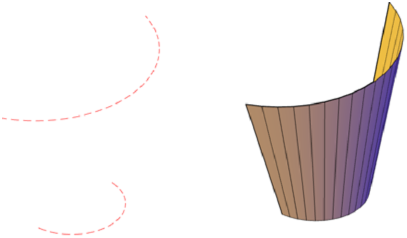
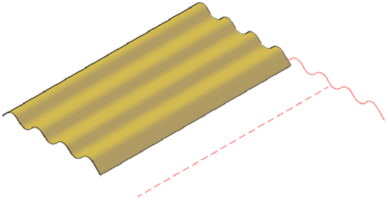
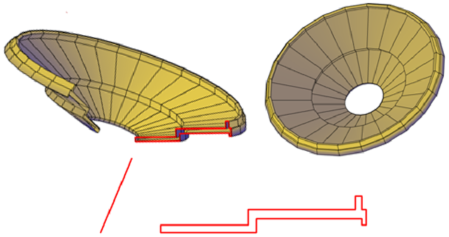
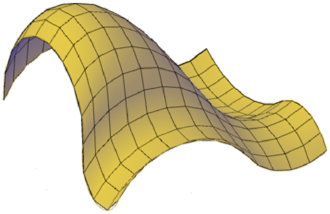
There are several methods for creating meshes.
With RULESURF, you create a mesh between two lines or curves. Use two different objects to define the edges of the ruled mesh: lines, points, arcs, circles, ellipses, elliptical arcs, 2D polylines, 3D polylines, or splines.
Both objects that are used as the “rails” of a ruled mesh must be either open or closed. You can pair a point object with either an open or a closed object.
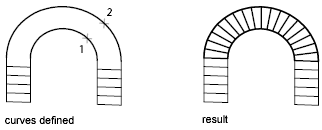
You can specify any two points on closed curves to complete the operation. For open curves, construction of the ruled mesh is based on the locations of the specified points on the curves.
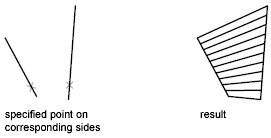
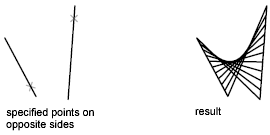
With the TABSURF command, you can create a mesh that represents a general tabulated surface defined by a path curve and a direction vector. The path curve can be a line, arc, circle, ellipse, elliptical arc, 2D polyline, 3D polyline, or spline. The direction vector can be a line or an open 2D or 3D polyline.
TABSURF creates the mesh as a series of parallel polygons running along a specified path. The original object and the direction vector must already be drawn, as shown in the following illustrations.
Use the REVSURF command to create a revolved mesh by rotating a profile of the object about an axis. REVSURF is useful for mesh forms with rotational symmetry.
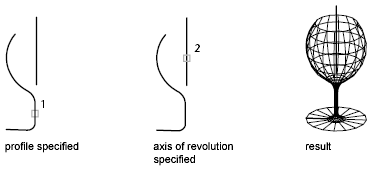
The profile is called a path curve. It can consist of any combination of lines, circles, arcs, ellipses, elliptical arcs, polylines, splines, closed polylines, polygons, closed splines, or donuts.
With the EDGESURF command, you can create a Coons surface patch mesh, as shown in the following illustration, from four objects called edges. Edges can be arcs, lines, polylines, splines, or elliptical arcs that form a closed loop and share endpoints. A Coons patch is a bicubic surface (one curve in the M direction and another in the N direction) interpolated between the four edges.
